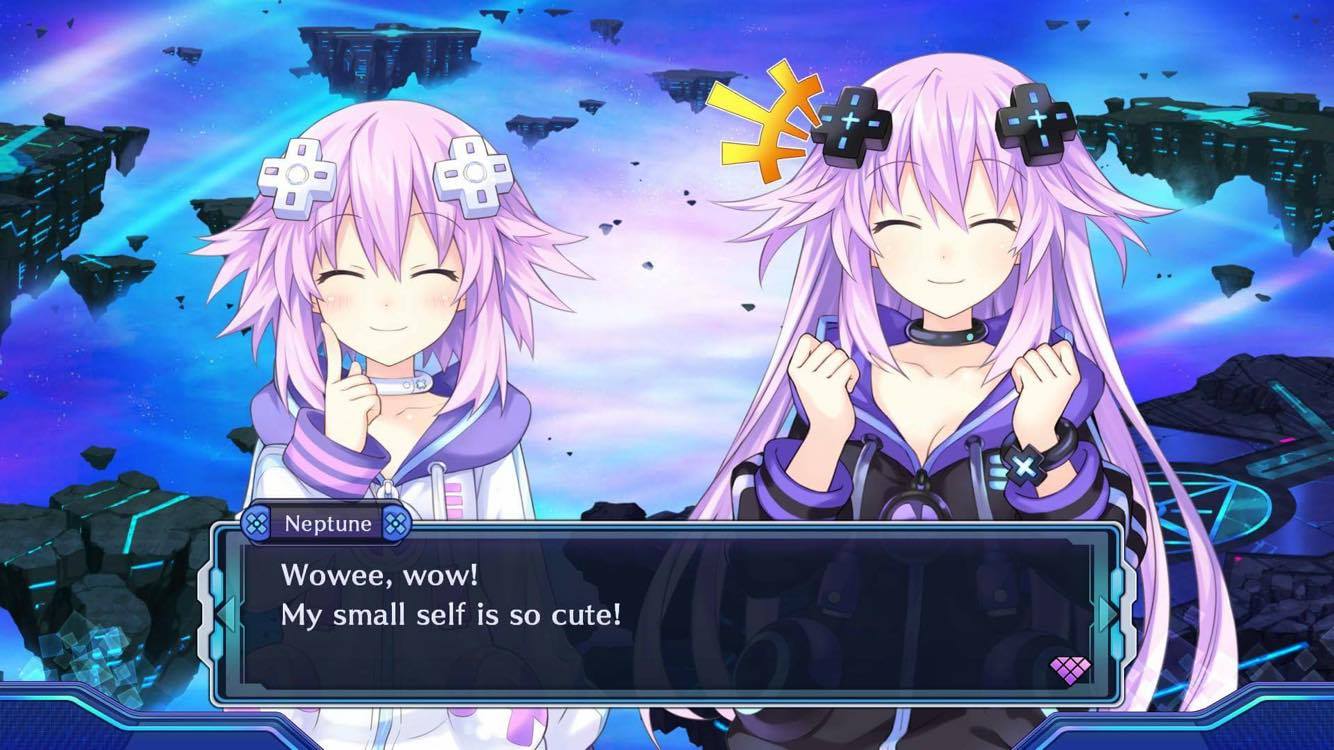Little Neptunian and Big Neptunian: A Tale of Two Neps

As an anime connoisseur, I've remarked on an interesting little insight about some today's trending anime. In particular, I'm considering the "isekai" genre, whose popularity boomed in major ways over the past decade. What exactly is "isekai"? A very concise explanation is that it's basically a trope about being transported/transposed from one "original world" to some "other world". Stories like that have existed for a very long time, of course. Today's spark of inspiration was to define "Neptunianness" as away to further categorize those world-transfers!
What is Neptunianness? Well, there are two flavours: Little Neptunian and Big Neptunian. Depending on "how" the world travelling occurs, the trope can be categorized as being either "Little Neptunian" or "Big Neptunian". In the case where a person, place, object or thing is unwittingly transferred to another world, we have a "Little Neptunian" transfer. On the other hand, when the person, place object or thing proactively travels to another world, we have "Big Neptunian" travel. This naming convention comes as a combination of two concepts: Endianness and Neptunia. Endianness is a computer science categorization of whether values are expressed with most-significant-bit-first or least-significant-bit-first. Neptunia is a series of video games featuring an epic protagonist named "Neptune" and her pals, all of whom are anthromorphizations of video game consoles. They are "CPUs/Goddesses" in their world and they never age. A major gimmick in these games is that Neptune ends up "jumping" dimensions (worlds) on a fairly regular basis and ends up in all kinds of comedic adventures. The original Neptune often ends up travelling unexpectedly. In a later game of the series, the character Big Nep is introduced, who is basically an older version of Neptune who has the power to travel dimensions on at-will rather than being forced into transfers. This creates a multiverse having two Neps – little, original Nep; plus full-bodied, sexy Big Nep. Since the little Nep frequently ends up in new worlds against her own will, we label that phenomenon as "Little Neptunian" travel. Since Big Nep travels willingly and has tools/techniques to let her do so, we label such phenomenon as "Big Neptunian" travel.
Let's now take some time to explore some examples, apply the labels, and see what happens at the fringes.
Hyperdimension Neptunia (2010) - In the first installment of the Neptunia games, one of the very first things that happens is that Neptune is transported to "another dimension" against her will. In all the other installments, the games pretty much start with that gag, too. It's safe to call these "Little Neptunian" events.
Megadimension Neptunia VII (2015) - By the 4th mainline game, if we consider the series' sequence to have been "Original game, mk2, V and then VII", we get the appearance of Big Nep, the adult-sized version of Neptune and expert dimension traveler. Since she can jump across worlds on her own initiative, any of those events for her are called "Big Neptunian" travel.
Fushigi Yuugi (1991) - This manga story features, Miaka, who reads a book titled The Universe of the Four Gods and is forcibly transported into a world that largely resembles ancient China. She was warped in "Little Neptunian" fashion by the magic book.
Magic Knight Rayearth (1993) - Here, 3 girls are forcibly transferred to another world in order to to set things straight by rescuing a princess. Another case of adventures started by "Little Neptunian" meta-physics.
Disgaea-series video games - In Disgaea, one of the main mechanics of the game is that the protagonist employs "dimensional portals" to travel to all the destinations of the game. Whereas most of the games will take place in the Netherworld, the stories almost always unlock travel to Celestia and Earth, as well. In these cases, we clearly have "Big Neptunian" travel at the disposal of the protagonists.
Disgaea 4 (2011) - A quirk within Disgaea 4 is the character Fuka. Her backstory is that she died and got sent to the Netherworld. In her case, she was transferred "Little Neptunian" style into the protagonist's party and subsequently tags along in "Big Neptunian" style on all the adventures - all super casual, too.
Spirited Away (2001) - This classic Miyazaki film is harder to gauge. Chihiro willingly walks through some kind of "tunnel" but only wakes up to the fact that she's essentially in another world later on. It's arguably an initial "Little Neptunian" transfer because she never intended to be whisked into another world, and arguably wrapped up with a "Big Neptunian" return to the normal world without all the bizarre spirits by the film's end. It's also arguable that she wanted to escape the dull humdrum of the normal world and induced the spiriting-away on her own to some extent only to have quickly have regrets over that and get a new desire to have a totally regular life.
So, there we have it. Neptunianness, in two forms: Little Neptunian and Big Neptunian. Involuntary world transfers and voluntary world transfers, in other words.
Extra
A big shift in entertainment culture over the past few decades has roughly been from "slice of life" (K-ON; Love, Chunibyo & Other Delusions; Lucky Star; Acchi Kocchi; etc) stories in the early 2000's and 2010's to all kinds of "my life in anther world" (That Time I Reincarnated as a Slime; KonoSuba: God's Blessing on this Wonderful World; Rising of the Shield Hero; I've Been Killing Slimes for 300 Years and Maxed Out My Level; etc) in more recent years.
I had been thinking about such matters when my mind thought to the Neptunia series and had its "aha!" moment to more clearly identify the types of world-transfers using succinct terminology.